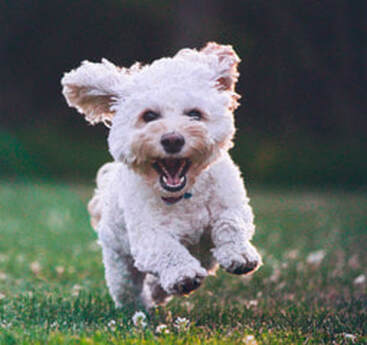
By Chris Zink DVM PhD DACVSMR
Malassezia Overgrowth
There are 2 kinds of Malassezia overgrowth. Occasionally dogs will experience a massive overgrowth, in which large numbers of yeast grow on the skin and penetrate into the skin layers, causing hair loss, a darkening/reddening of the skin color and the accumulation of greasy scabs. This type of infection can be seen in dogs that have endocrine disorders, immune suppression, or allergies, all of which can alter the skin’s normal barrier function. It can also occur after long term treatment with antibiotics or steroids, causing an imbalance of the normal bacteria that live on the skin and keep it healthy. That form of Malassezia overgrowth demands immediate veterinary attention, and often requires treatment with topical and/or systemic anti-fungal agents.
But let’s talk about the less extensive kind of Malassezia overgrowth that can cause milder, localized skin inflammation, ear and nail bed infections and also causes those unsightly stains around the eyes, and on the mouth, ears and feet. Besides the fact that those red-brown stains affect your dog’s appearance, it is important to reduce the amount of Malassezia growing on your dog because the fungus itself is quite immunogenic (1). It induces your dog’s body to mount an inflammatory response, which can induce a state of chronic inflammation on your dog’s skin. Chronic inflammation of any organ is undesirable, and the skin is actually the largest organ in the body. Reducing the number of Malassezia organisms growing on your dog’s skin and coat is key.
A Few of Yeast’s Favorite Things
What kind of environment favors the growth of Malassezia? This yeast would do very well on a tropical island, because it loves moisture and warmth. Your dog’s ears, facial folds (especially common in brachycephalic dogs), folds around the lips, skin between the toes, and other areas with skin folds, such as the vulva, are Home, Sweet Home for Malassezia. As a result, the most important factor in reducing yeast growth is to keep these areas clean and dry. This can be done by wiping moist areas daily with an antimicrobial soap such as those containing chlorhexidine, followed by thorough drying. If your dog is a water baby, towel off their face, ears, and other susceptible locations when the water play is done.
To reduce the amount of yeast in your dog’s environment, make sure you put your dog’s food and water bowls in the dishwasher daily, using the sanitize setting. This will get rid of the biofilm that often covers these items and almost certainly contains yeast.
Tip: Dogs that suffer frequent ear infections should be seen by a veterinarian to check for allergies or other underlying causes. In addition, I have found that shaking some Desenex® foot powder in the ears once a week can help prevent this frustrating and painful condition. The foot powder has drying and antifungal properties, which helps reduce yeast growth.
Of course, there are some areas that just cannot be kept clean and dry. This is particularly true for dogs that produce a lot of tears. Many small dogs have plugged or very small tear ducts, which can make them tear excessively. Brachycephalic dogs frequently have large eyes and small eyelids, which cause their tears to overflow. A visit to a veterinary ophthalmologist is always warranted, to be sure that there isn’t a physical reason for excessive tearing that could be corrected. Unfortunately, those chronically moist areas under the eyes can provide a perfect environmental niche for yeast growth.
While there are no peer-reviewed data on the effect of diet on tear staining, my clinical experience suggests that non-allergic dogs that have tear staining can benefit from a change to a fresh diet. The figure below shows a client’s dog whose eyes were always stained, even though Chloe’s person cleaned them religiously every night. The photo on the left shows Chloe’s tear stains when she was fed kibble. The photo on the right was taken one month after Chloe was switched a store-bought fresh frozen dog food. Nothing else was changed. Pretty amazing!
Share this article!